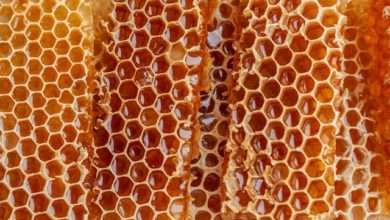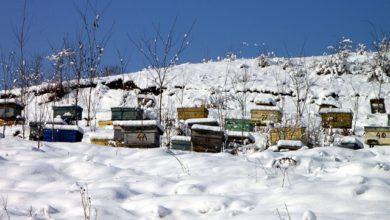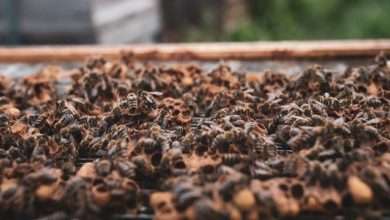What is a Walk Away Split?
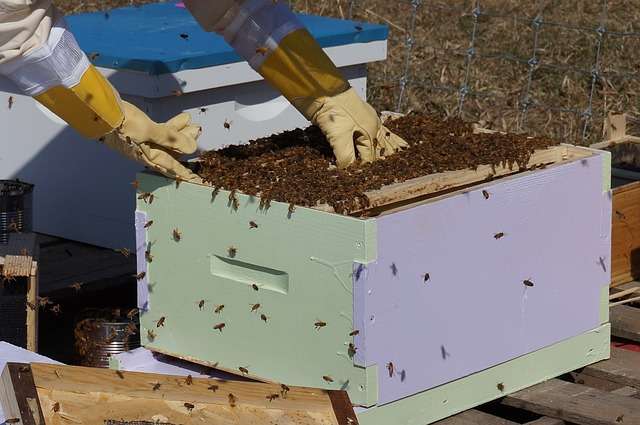
Beekeeping is an increasingly popular way to maintain their own healthy colonies of honeybees. In order to sustain a healthy bee population it is important to understand the needs of a honeybee colony and how to ensure its wellbeing through the seasons. One important tactic that may help beekeepers to accomplish this task is the “Walk Away Split”.
This article will look at what a Walk Away Split is, and why it is important for beekeepers to understand this concept, and how it works. We will also go over some tips and considerations for beekeepers who are considering a Walk Away Split.
What is a Walk Away Split?
A Walk Away Split, in the context of beekeeping, is a method by which a beekeeper will create a new colony by splitting an existing colony into two or more new colonies. This is beneficial for beekeepers in that it allows a beekeeper to increase the number of colonies they manage, while also ensuring that the new colonies are composed of bees that are well adapted and conditioned to the local climate and environment.
When a beekeeper splits a colony, they essentially separate the original colony into two or more new colonies. This is typically done by moving a portion of the original colony or by taking a split from one colony and combining it with another. The split can be done in several ways but all involve the transfer of bees, honey frames, and brood frames between the colonies.
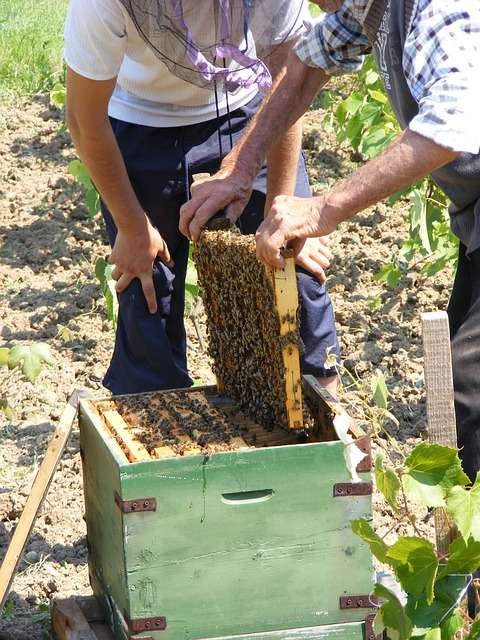
Why is a Walk Away Split Important?
A Walk Away Split is an important tool for beekeepers because it helps to maintain the health of the honeybee population while also allowing for an increase in the number of colonies a beekeeper manages.
When a beekeeper splits a colony, they are ensuring that the new colonies are composed of bees that are better adapted to the local environment and climate. This helps to maintain healthy populations of bees that are better able to survive and produce honey in any given area.
When a beekeeper increases the number of colonies they manage, it also helps to increase the number of hives. This helps with disease control efforts and also helps to increase the total honey production of that beekeeper.
How Does a Walk Away Split Work?
A Walk Away Split in beekeeping is typically done when a colony is healthy, with a strong queen, abundant frames of brood, and an ample honey supply. The beekeeper will usually take a split from one colony and combine it with another colony. The exact method used will depend on the number of colonies the beekeeper has and their type of bee hives.
In general, the beekeeper will remove the queen from the original colony and place her into the newly formed colony, along with several frames of brood, honey, and bees. This helps to ensure that the new colony has a strong queen and a good start. The beekeeper will then place a frame of unhatched eggs into the new colony, which helps to ensure that the queen will produce additional workers.
Once the split is complete, the beekeeper will typically have both colonies in the same apiary. The leftovers from the original colony will generally contain a few additional frames of brood and honey, which can be used for the new colony, if needed, to help get it off the ground.
The beekeeper will usually leave the colonies to develop for a few weeks before doing any further manipulations. This allows the new queen to settle in and produce additional workers. Once the new colony has established itself, the beekeeper can focus on managing both colonies as needed.
Advantages of Walk Away Split in Beekeeping
Here are some of the benefits of walk away split in beekeeping.
- Increase in Hive Population:
A walk away split will result in an increase in hive population. If a beekeeper finds that a beehive is becoming overcrowded, they can utilize a walk away split to divide the colony into two parts. This effectively reduces overcrowding and the risk of swarming. The two colonies will then continue to grow side by side and will have a better chance of surviving the winter.
- Disease Control
Splitting a beehive also helps to control bee diseases. In the wild, bees build a new hive when there is an infestation or disease issue. Similarly, when a beekeeper observes signs of disease in a hive, they can use this technique to manage the issue. By dividing the fixed colony, the infected section can be isolated and treated accordingly.
- Honey Production
A walk away split in beekeeping can increase the production of honey, too. Since a split hive can grow faster and have a healthier population, it can become a source of more honey. Moreover, the second healthy colony would contribute significantly to the growth and strength of the parent colony.

- Training Young Colonies
Splitting colonies allows beekeepers to train young colonies and keep them healthy. The young colonies will have a faster rate of growth and development while the original colony is able to rest and recover. A new colony requires a lot of attention and care in the initial phase. Walking away split facilitates the process of providing extra attention to them while insuring the continuation of beekeeping process.
- Profit
Last but not least, a walk away split is cost-effective as it can lead to increased profits. An increase in the number of healthy colonies will eventually produce more honey and other products such as beeswax. This can be a great benefit for commercial beekeepers who can earn a good income by selling their products in the market.
Tips and Considerations for Beekeepers Who Are Considering a Walk Away Split
As described above, a Walk Away Split in beekeeping can be an effective way for beekeepers to increase the number of colonies they manage while also ensuring that the new colonies are well adapted to the local environment and climate. However, before attempting a Walk Away Split, there are several tips and considerations that beekeepers need to keep in mind.
The first is to make sure that the colony that is being split is healthy and strong. If it is not, then the chances of success with the split are lower. It is also important for beekeepers to make sure that the split is done in a way that will not harm either the original or the new colony. Improperly done splits can result in either colony not achieving the desired results.
When splitting colonies, beekeepers also need to consider what type of split they will be doing. Splitting a colony by moving a portion of the original colony is known as a “full split,” while taking a split from one colony and combining it with another is known as a “walk away split.” Each type of split has its own advantages and disadvantages, and should be considered before beginning.
Finally, it is also important for beekeepers to keep track of the results of their split. Check the original colony, as well as the new colony, to ensure that the split was successful. This will help the beekeeper establish better methods for future splits, if needed.
Conclusion
A Walk Away Split in beekeeping can be a great way for beekeepers to increase the number of colonies they manage while also helping to better condition the bees to the local environment and climate.
However, beekeepers need to keep in mind several tips and considerations before attempting a Walk Away Split, including making sure the original colony is healthy and strong, determining which type of split is best for their needs, and tracking the results of the split.
By understanding and properly implementing a Walk Away Split, beekeepers can ensure the health and success of their colonies.
FAQ
What is Walk Away Split in Beekeeping?
- Walk Away Split is a beekeeping technique used for dividing a healthy colony of bees into two colonies. It involves separating the queen and a portion of the worker bees from the original hive and allowing the remaining bees to produce a new queen.
Why would I want to split my bee colony?
- Splitting a bee colony can help prevent an overcrowded hive, which can lead to reduced honey production and the risk of the bees swarming. It also creates a new colony that can be used for additional honey production or sold to other beekeepers.
When is the best time to perform a Walk Away Split?
- The best time to perform a Walk Away Split is in the spring when the colony is expanding and building up its honey reserves. This is typically when the first nectar flow starts, and the bees are more active.
Can I perform a Walk Away Split if my colony is weak?
- No, it is not recommended to perform a Walk Away Split on a weak colony because it can cause stress and harm to the bees. A strong and healthy colony should be used for splitting.

How do I know if my colony is strong enough to perform a Walk Away Split?
- A strong colony should have a good population of bees, brood, and honey reserves. The presence of multiple frames filled with capped brood and honey can indicate strength.
What equipment do I need to perform a Walk Away Split?
- You will need basic beekeeping equipment such as a hive tool, smoker, protective gear, and additional bee boxes to house the new colony. You may also need to purchase a new queen or allow the new colony to produce their own queen.
How long does the Walk Away Split process take?
- The process itself should take no more than an hour, but it may take several weeks for the new colony to establish and begin producing honey.
What are the risks associated with Walk Away Split in Beekeeping?
- The risks associated with Walk Away Split in Beekeeping include the possibility of harming the queen or accidentally killing off a significant portion of the colony. Additionally, splitting a colony too late in the season can result in the new colony not being able to establish and survive winter.
How can I tell if the Walk Away Split was successful?
- A successful Walk Away Split can be determined by observing the new colony’s behavior and productivity. You can look for signs of queen production and brood development, as well as honey production.
Can I perform a Walk Away Split on my own, or do I need professional help?
- While it is possible to perform a Walk Away Split on your own, it may be beneficial to seek advice from experienced beekeepers to ensure a successful split. If you are new to beekeeping, it may be best to have a professional assist you with the process.
